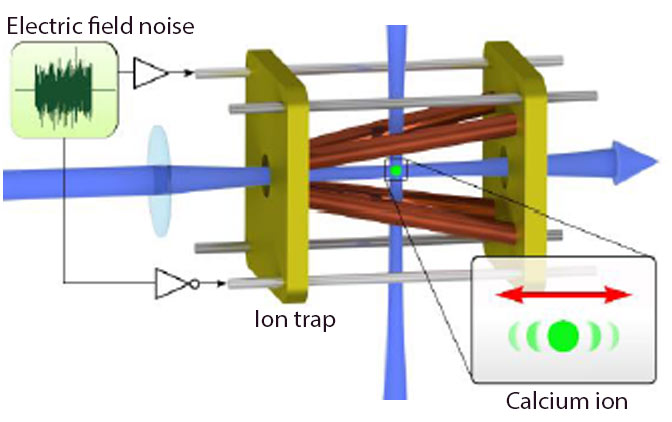Heat engines are just about everywhere — in the internal combustion engine that runs in your car, in the power station steam turbines that light up your neighborhood, and in the engines that push passenger jets through the sky. Usually they weight a ton or more, heating and cooling some trillion molecules to generate power. Now, physicists in Germany have built what could be the world’s smallest heat engine, powered by a single electrically-charged calcium atom.
The new device reportedly has the equivalent thermodynamic efficiency (if scaled to size) of an average automobile engine. Basically a heat-exchange engine, its single-atom acts as both fuel and power plant, and is heated by electrical noise and cooled by laser beam.

Image source: sciencemag.org.
Heat-exchange engines convert thermal energy into mechanical work (a car engine is one example) in line with the first and second laws of thermodynamics, meaning the energy applied to the system is conserved in the process of converting heat into mechanical motion, and that efficiency limits and energy flows are observed. Similarly, the new miniscule nano-powerhouse undergoes a thermodynamic cycle just like the processes that occur in the cylinders of a standard car engine. The difference is that the power generated is converted into a vibration of the atom so that it plays the role of both the motors and the energy store.
In collaboration with theoretical physicists from Friedrich-Alexander-Universität Erlangen-Nürnberg (FAU), scientists working at Johannes Gutenberg Mainz (JGU) created the engine by enclosing the ion (a calcium atom with one electron removed) inside an 8-mm-long funnel-shaped electrical trap created by four electrodes. The team then heated it with noise generated by another set of electrodes. The noise, a randomly fluctuating electric field, transferred energy to the ion, which caused it to wiggle back and forth inside the trap and move toward the broad end of the funnel, making the engine’s power stroke. The noise was then turned off, causing the calcium ion to slow down, and after colliding with particles of light from a laser beam that shined through the funnel trap, it cooled off. The cooling forced the ion back to the narrow end of the trap, where the electrical field was strongest. Afterwards, the cycle continued.

Image source: JGU.
By turning the noise on and off at the right rate, the scientists were able to tune the engine so that the frequency of the ion’s up-and-down motion matched the trap’s natural oscillation frequency. This caused the ion to travel further along the funnel from one cycle to the next. The result was a flywheel of sorts that gradually built up usable energy. Currently the team dumps that energy by letting another laser absorb it.
According to Peter Steeneken, a physicist at the Delft University of Technology in the Netherlands, the German group provides “convincing evidence” for having built a single-ion engine. He said that the work “provides a way to study the ultimate and fundamental limits of the application of heat engines.” But he believes that practical applications are hard to envisage.
As of now, the device takes in about 1000 photons per cycle from the noise, which is a miniscule amount of energy, but is still too high for scientists to observe real quantum phenomena. There’s still work to be done until deviations from classical thermodynamics can be seen.
Source: Gizmag
Advertisement
Learn more about Electronic Products Magazine





